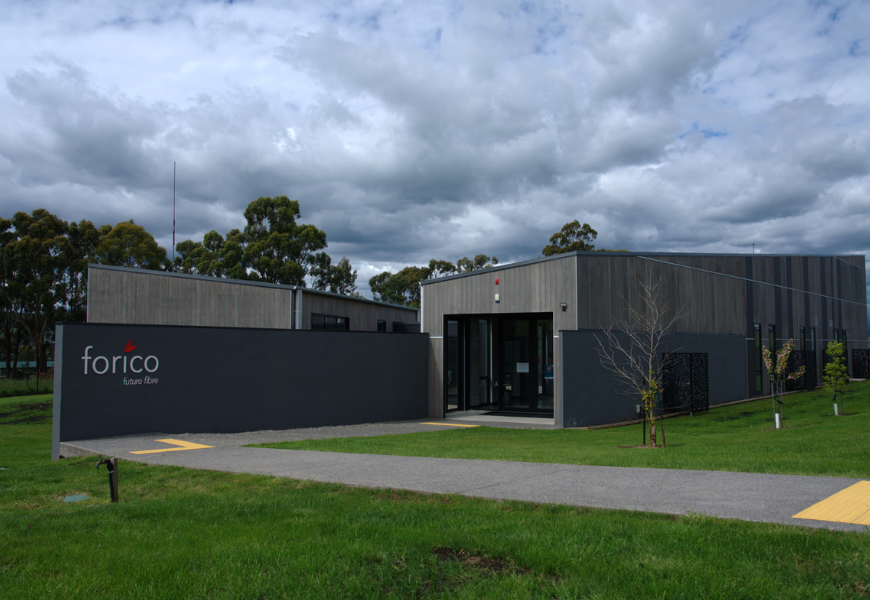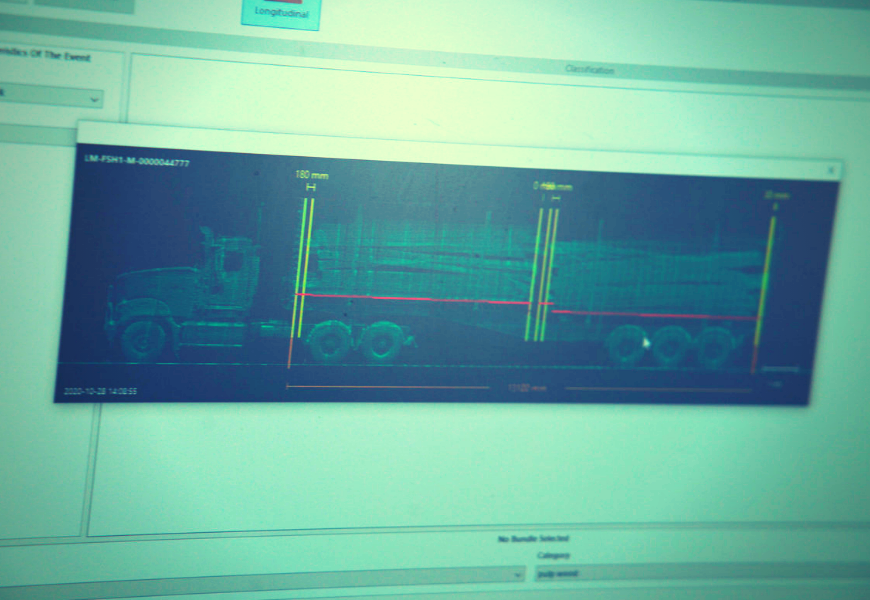Axing barriers to digital transformation
Like many heavy industry businesses throughout the country, forest management firm, Forico, has been upping its use of digital technology in a bid to increase productivity, sustainability and safety across its remote worksites.
Yet, with its large rural footprint – spanning over 175,700 hectares, tools designed to exchange or collate information haven’t always worked as planned.
Ready for connectivity change, Forico recently engaged with service provider 42-24 to connect its head office to business nbn™ Enterprise Ethernet^ and create a unique solution for its remote sites.
Changing needs and challenges
“The forest management industry is undergoing change powered by digital transformation,” says Shevaun Mackenzie, IT Manager at Forico.
“New technology like our digital docketing system […] has the potential to make operations more efficient, sustainable and safe for our staff.”
But connectivity limitations were restricting the digital opportunities Forico could consider while also impacting the critical operations already in place.
One challenge was the way the company managed regular data backups.

Due to the large volume of data to be stored, the backup activity could take up to two and half days running over the weekend to complete with their original upload speeds.
In response, Forico’s team would, at times, opt to transfer data backups manually via a portable hard drive that would be physically driven to a backup storage site.
Beyond data backups, the company’s operations rely heavily on technology to collaborate and manage their processes.
“Our remote sites need to be able to communicate with head office using video conference and our staff need to be able to access work related files – stored on our centralised server – from each of the remote sites,” says Shevaun.
Finding the right solution
Given the complexity of access to its sites that are often in remote, mountainous, and forested areas, 42-24 suggested a hybrid solution that leveraged business nbn™ Enterprise Ethernet and 42-24’s own microwave link capability.
“42-24 was delighted to work with Forico to help connect two of its sites to an improved broadband solution,” says Dean Dixon, Business Development Manager at 42-24.
“The solution brings premium business-grade fibre directly to Forico’s head office in Launceston with Enterprise Ethernet^, and enabled us to set up a separate microwave link that connects their head office site to one of their most remote locations, the Surrey Hills ‘chip mill’ in Burnie, Tasmania,” added Dean.
By leveraging a hybrid solution comprised of Enterprise Ethernet^, Forico’s head office connection includes a high speed symmetrical data plan where speeds are equal for both upload and download activity. This network feature is designed to support real-time communication needs like those that are critical to Forico’s operations.

Getting on with their digital strategy
Increasing their head office data speed plan to a plan based on wholesale speeds of up to 100 Mbps# and leveraging a microwave link connection, has been a game-changer for Forico, enabling the company to upgrade its rural infrastructure at the Surrey Hills site in line with its metropolitan sites.*
For example, Forico recently installed 3D laser scanning technology at its Surrey Hills site that measures the volume of wood arriving on trucks, replacing older technology that simply weighed the load.
This new method optimises the efficiency and sustainability of their transportation process. For the scanner to be accurate, it needs to take more than one million measurements per vehicle load, which in turn generates a 3D image of every truck.

While much of that process is done onsite, strong connectivity between the sites is needed to relay the scanning data to Forico’s head office, where further processing and analysis is performed.
The scanner is the first installation of its kind in the southern hemisphere and is supported by the product’s vendor in Chile, which performs remote maintenance and support that requires ongoing access to Forico’s server.
Employing this kind of world-class technology is just one example of how businesses like Forico are revolutionising the way they operate by implementing connected technology.

Collaborating across sites
Further benefits of Forico’s connectivity upgrade can be seen in improvements to cross-site collaboration.*
Employees can now connect with each other easily onsite at the Surrey Hills mill with ready access to business chat and video conferencing tools.

Combined with improved access to company servers, this new level of connectivity has increased Forico’s ability to centrally manage its business by opening up remote access to IT systems for staff working at both head office and other sites.
For Forico, connectivity is making for a safer, more efficient and more sustainable operation.
“Today, we are able to look towards the future,” says Shevaun, “and have started implementing technology that is overhauling the way we operate for the better.”*
* nbn is very happy with Forico’s experience with the nbn™ network. Of course, end customer experiences may vary. An end customer’s experience, including the speeds actually achieved over the nbn™ network, depends on the nbn™ access network technology and configuration over which services are delivered to their premises, whether they are using the internet during the busy period, and some factors outside of nbn’s control (like their equipment quality, software, chosen broadband plan, signal reception, or how their provider designs its network).
^ business nbn™ Enterprise Ethernet upgrade option is only available on the nbn™ Fixed Line network and for limited premises in the nbn™ Fixed Wireless and Satellite footprints.
# nbn provides wholesale services to phone and internet providers. nbn™ wholesale speed tiers available to providers vary depending on the access technology in an end customer’s area. An end customer’s experience, including the speeds actually achieved over the nbn™ access network, depends on the nbn™ access network technology and configuration over which services are delivered to their premises, whether they are using the internet during the busy period, and some factors outside of nbn’s control (like their equipment quality, software, chosen broadband plan, signal reception, or how their provider designs its network).


